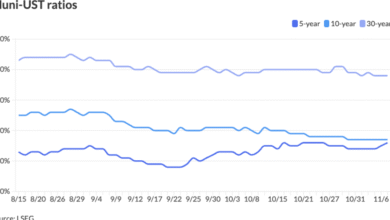U.S. Mortgage Rates Climb Despite Fed Rate Cut as Bond Market Reacts to Powell’s Comments

In a twist that caught many borrowers off guard, U.S. mortgage rates climbed this week even as the Federal Reserve cut its benchmark interest rate, highlighting once again that home loan costs are influenced more by bond market sentiment than by the Fed’s direct policy actions.
According to Mortgage News Daily, the average 30-year fixed mortgage rate jumped by 20 basis points following Fed Chairman Jerome Powell’s announcement on Wednesday and his subsequent news conference. The increase reversed a steady decline that had taken rates to a one-year low earlier in the week.
On Tuesday, the average rate stood at 6.13%, matching its lowest level since September 16 — the day before the Fed’s previous rate cut. But by Thursday, the rate surged to 6.33%, with a 14-basis-point jump immediately after Powell’s remarks and another six-point gain the following day.
Register for Tekedia Mini-MBA edition 19 (Feb 9 – May 2, 2026): big discounts for early bird.
Tekedia AI in Business Masterclass opens registrations.
Join Tekedia Capital Syndicate and co-invest in great global startups.
Register for Tekedia AI Lab: From Technical Design to Deployment (begins Nov 15th).
The last time the Fed lowered rates, in September, the same pattern played out: the 30-year fixed mortgage rate initially fell before rebounding sharply to 6.37%.
Bond Market Drives the Upswing
Analysts said the bond market had already priced in the expected rate cut but reacted negatively to Powell’s less dovish tone during his post-meeting remarks. Investors interpreted his comments as a signal that future rate cuts might not come as quickly or as often as markets had hoped.
“The market’s enthusiasm for three Fed rate cuts in 2025 had grown a bit too large for the Fed’s liking,” said Matthew Graham, chief operating officer at Mortgage News Daily, in a note to clients. “The market was nearly 100% certain of another cut in December. The Fed was not as certain, and Powell made it a point to say so yesterday. The result is a mild reset in yields back to levels that are more consistent with a December cut being a solid possibility, but not a full lock.”
That skepticism pushed Treasury yields higher, and since mortgage rates closely track the 10-year U.S. Treasury yield, borrowing costs for homebuyers quickly followed suit.
Refinancing Surge, but Limited Homebuyer Response
The recent dip in mortgage rates before the Fed meeting had triggered a surge in refinancing applications, which jumped 111% year-over-year last week, according to the Mortgage Bankers Association (MBA). However, lower rates have not translated into a comparable rebound in home purchase activity, as affordability challenges remain steep across much of the U.S. housing market.
Despite the modest easing in borrowing costs earlier this month, home prices remain historically high, and many potential buyers continue to sit out, wary of uncertain economic conditions and lingering inflation concerns.
Market Outlook
With the Fed signaling a cautious path ahead, analysts expect mortgage rates to remain volatile through the end of the year. Much will depend on economic data and whether inflation continues to move closer to the central bank’s 2% target.
However, borrowers hoping for a sustained drop in mortgage rates may need to temper expectations for now. As Graham noted, the bond market “simply needed a reality check,” and until investors are convinced that the Fed is fully committed to a longer easing cycle, mortgage rates may stay stubbornly above 6% — even in a rate-cutting environment.








